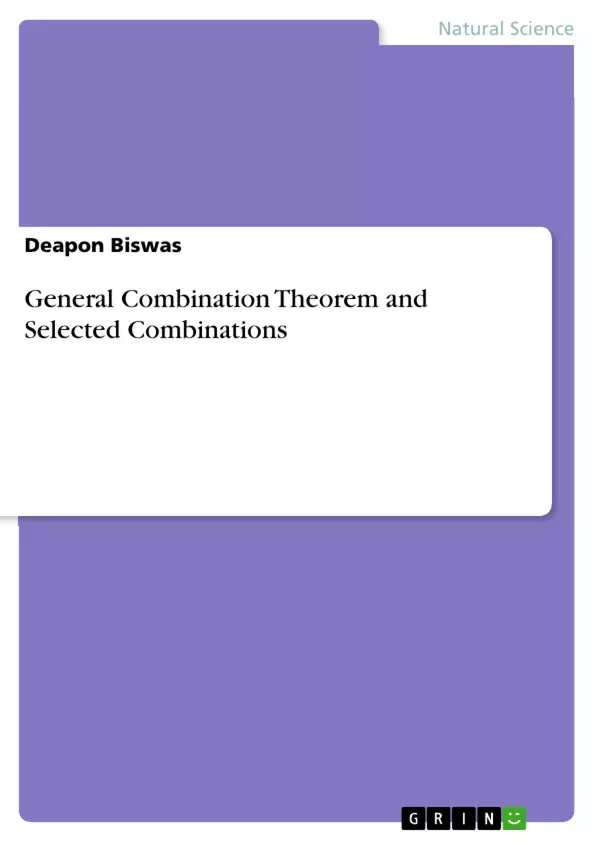So for combinations are discussed with different theorems in algebra. In this chapter I apply assembly analysis to get the theorems easy and memorable. After assembly analysis applied there becomes a lot of new theorems and all the theorems get a new face by summation methods.
We have a full idea about combination. It indicates the outcome of arandom experiment. That is combination is the selection of M different components taken V at a time what is called usually a random experiment where order is not taken into account and repetitions are not allowed.
Inhaltsverzeichnis (Table of Contents)
- Introduction
- Preliminaries
- Combination Space
- Combination Member
- Combination Component
- Identified Combination
- Combination Event
- General Combination Theorem
- Combination Distribution
- Combination Expansion
- Selected Combinations
- Conclusion
Zielsetzung und Themenschwerpunkte (Objectives and Key Themes)
This chapter aims to provide a comprehensive understanding of combinations in algebra through the application of assembly analysis. By employing this approach, the chapter presents new theorems and offers a fresh perspective on existing ones using summation methods.
- Combination space and its components
- General combination theorem and its derivation
- Combination distribution and expansion
- Selected combinations and their application
- The role of summation methods in analyzing combinations
Zusammenfassung der Kapitel (Chapter Summaries)
- Introduction: This section provides a general overview of combinations as a concept and their application in random experiments. It highlights the significance of order and repetitions in understanding combinations.
- Preliminaries: This section introduces a foundational theorem relating to combinations, outlining its mathematical formulation.
- Combination Space: This section defines the concept of combination space as a set of all possible combinations in an experiment. It demonstrates how to create a combination space and explains the notation used.
- Combination Member: This section defines a combination member as an element of the combination space, containing a specific set of combination components. It clarifies the usage of the term "combination" in everyday language.
- Combination Component: This section explains the concept of a combination component as an element within a combination member. It clarifies the notation and how it relates to the position of a component within a member.
- Identified Combination: This section briefly introduces the concept of identified combinations without providing specific details.
- Combination Event: This section briefly introduces the concept of combination events without providing specific details.
- General Combination Theorem: This section introduces the general combination theorem and presents its proof using the summation method. It demonstrates how this theorem helps calculate the number of combinations of N components taken V at a time.
Schlüsselwörter (Keywords)
The chapter focuses on key concepts such as combination space, combination member, combination component, general combination theorem, combination distribution, combination expansion, and selected combinations. It emphasizes the application of summation methods in analyzing combinations and exploring new theorems in this field.
- Quote paper
- Deapon Biswas (Author), 2024, General Combination Theorem and Selected Combinations, Munich, GRIN Verlag, https://www.grin.com/document/1464423



